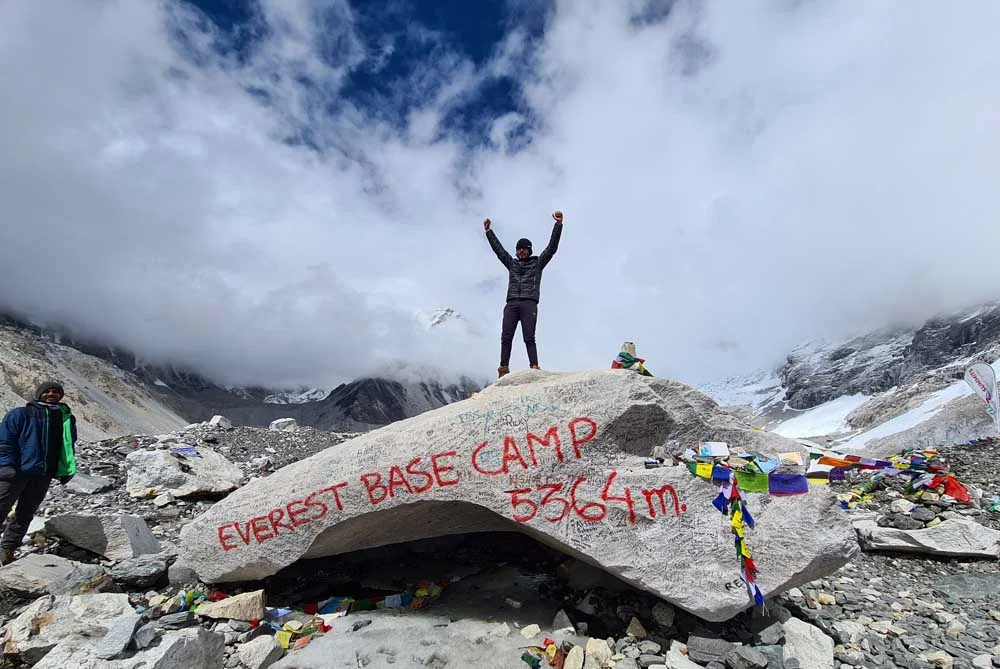Rescue During Everest Base Camp Trek: Everything You Need To Know
The Everest Base Camp Trek (EBC) is one of the most iconic and life-changing journeys on the planet. Attracting thousands of trekkers annually, it leads adventurers through the dramatic landscapes of the Khumbu region, winding past ancient monasteries, Sherpa villages, and towering peaks before culminating at Everest Base Camp (5,364m).
Despite its popularity, the EBC trek poses serious high-altitude challenges. The oxygen level drops to nearly 50% of sea level, making every step feel like a marathon. Trails are rocky, steep, and often slippery, with unpredictable weather conditions adding to the difficulty.
Common health threats include Acute Mountain Sickness (AMS), hypothermia, GI issues, and fatigue. Given the remote terrain and limited medical facilities, the need for swift, reliable rescue during Everest Base Camp trek becomes crucial. Whether you’re a first-time trekker or a seasoned alpinist, understanding how rescue operations work in this extreme environment is vital.
Types of Emergencies During the Everest Base Camp Trek
The EBC trek can be physically rewarding, but also physically demanding. Several kinds of emergencies can unfold during this journey, and being aware of them is the first step toward prevention and preparedness.
1. Altitude-Related Illnesses
One of the most common and dangerous issues on the Everest trail is AMS. Symptoms can begin as early as Namche Bazaar (3,440m), with headaches, dizziness, and nausea. If ignored, AMS can escalate into life-threatening conditions such as:
- HAPE (High Altitude Pulmonary Edema) – where fluid enters the lungs
- HACE (High Altitude Cerebral Edema) – swelling in the brain leading to confusion and even coma
Both require immediate descent or helicopter rescue from Everest Base Camp region.
2. Injuries and Accidents
Despite being a non-technical trek, slips, trips, and falls are common due to the uneven, icy, or gravel-laden trails. A twisted ankle or broken wrist could leave you immobilized in freezing temperatures, making rescue from Everest Base Camp urgent and often unavoidable.
3. Severe Exhaustion or Dehydration
Altitude amplifies fatigue. Trekkers who push too hard without rest often suffer extreme exhaustion, low blood pressure, or dehydration, necessitating emergency attention. These situations often worsen rapidly, especially at higher altitudes above 4,500m.
4. Sudden Weather Shifts
The Khumbu region is notorious for fast-changing weather. A clear sky can transform into a whiteout in minutes. Sudden snowfall, high winds, or landslides can cut off trails or make them impassable, leading to cold exposure, delays, or needing an emergency evac service in Everest region.
Helicopter Evacuation Services: How Air Rescue Works
In the Himalayas, helicopter rescue from Everest Base Camp is often the only feasible method to evacuate a critically ill or injured trekker. These missions are fast, focused, and heavily coordinated to ensure the safety of both the passenger and the crew.
How the Process Unfolds
When a trekker shows signs of a medical emergency, the guide immediately alerts the emergency coordination team, often via satellite phone. Once the situation is assessed and insurance is verified, we trigger the rescue process.
- Helicopters depart from Lukla or Kathmandu, depending on urgency and weather.
- Designated pickup points include Pheriche, Dingboche, Lobuche, and Gorakshep. EBC itself is rarely used due to difficult terrain, but emergency landings are possible.
- After pickup, the patient is flown directly to Kathmandu or Lukla, depending on their condition.
Rescue Logistics
Every helicopter rescue from Everest Base Camp package involves seamless coordination between:
- Ground crews for helipad clearance
- Air rescue pilots trained for high-altitude missions
- Medical facilities in Kathmandu like CIWEC, Norvic, or Mediciti
- Support from the field staff, who remain with the trekker until care is secured
These high-altitude rescues are executed with military precision, even in the toughest weather.

Insurance and Cost: The Financial Side of Rescue
Why Insurance Is Essential
Without insurance, the Everest Base Camp rescue cost could be financially crippling. Evacuations typically range from $4,000 to $6,000 USD, and that’s just for the helicopter ride, not including hospitalization or onward repatriation.
To trek safely, every We Ramblers client is required to have travel insurance for Everest Base Camp rescue that:
- Covers helicopter evacuation up to 6,000m
- Includes medical emergencies, hospital care, and trip cancellation
- Allows direct claims or pre-authorization for quick action
The Claim Process
After a rescue, we help you compile:
- A rescue certificate
- Doctor’s diagnosis and treatment summary
- Guide’s incident report
- Helicopter receipts and photos (if applicable)
These documents streamline the claim and increase the chances of full reimbursement.
Note: Some insurers demand proof of pre-authorization. Check your policy or consult with us before the trek begins.
We Ramblers’ Emergency Evacuation Support
Safety is not just a buzzword for us; it’s our core principle. We have established one of the most responsive emergency evacuation protocols in the Everest region.
What We Offer:
- 24/7 monitoring team tracking your progress
- Certified mountain guides trained in Wilderness First Responder (WFR) protocols
- Daily health checks and oximeter readings to detect early signs of AMS
- Satellite communication devices to maintain contact even in dead zones
- Pre-arranged coordination with leading air rescue providers and hospitals
Whether you’re 10 minutes from Namche or in the remote corners of Gorakshep, our team will deploy a solution—fast, organized, and life-saving.
Coordination with Authorities and Local Support Teams
No successful rescue from Everest Base Camp is possible without strong coordination with local agencies. We work closely with:
- TAAN (Trekking Agencies’ Association of Nepal) – Maintains official trekker records and guides protocol
- Nepal Police and Army Units – Often assist during severe weather or politically sensitive zones
- Local Sherpa communities and teahouse owners – Help identify helipad zones, transport the sick, and pass on weather updates
Documentation is handled swiftly, including:
- Trekkers’ passport and insurance info
- Medical condition summaries
- GPS coordinates of the location
- Signed reports from guides and local authorities
This seamless chain of command ensures that every Everest region trekking evacuation is smooth and stress-free for the trekker and their family.
Tips to Avoid Needing a Rescue During Everest Base Camp Trek
While rescues are effective, avoiding one is always better. Here are essential strategies:
- Acclimatize Slowly: Spend extra nights at Namche and Dingboche
- Hydration is Key: Drink 3–4 liters of water daily; avoid alcohol and caffeine
- Trek Smart: Don’t compete or push your limits; “slow is strong”
- Speak Up Early: Inform your guide of even minor symptoms
- Train Before You Trek: Build stamina, strength, and mental resilience
- Pack the Essentials: Windproof jackets, headlamps, high-calorie snacks, and a basic first-aid kit
These preventive steps significantly lower your chance of needing a rescue response.
Frequently Asked Questions (FAQs) About Rescue During EBC Trek
Q: How long does a rescue take once initiated?
A: In ideal weather, helicopters reach you within 2–3 hours. Delays can occur due to fog, wind, or snowfall.
Q: Is helicopter landing at Base Camp safe?
A: It’s possible, but usually avoided. Most rescues happen from Gorakshep or Pheriche, where terrain is safer for landing.
Q: What if I don’t have insurance?
A: You’ll be liable for the full cost. We strongly advise securing travel insurance for Everest Base Camp rescue well in advance.
Q: Do you help with refunds for missed trek portions?
A: Yes. Depending on the situation, we may provide documentation for insurance and partial refunds or trek credits for future adventures.
Q: Can families be notified during a rescue?
A: Absolutely. Our team keeps your emergency contact informed, and offers real-time updates on the evacuation process.
Safe Treks Begin with Smart Choices
The Everest Base Camp Trek is an unforgettable journey, but it’s not without risk. Proper planning, insurance, and trekking with an experienced partner make all the difference when things don’t go as planned.
With We Ramblers, you’re not just joining a trek; you’re gaining a safety net built on years of experience, modern rescue infrastructure, and human-first care. Whether it’s a slight altitude headache or an emergency airlift, we’re there—on the trail, in the sky, and at your side. Contact us today to get full details.





